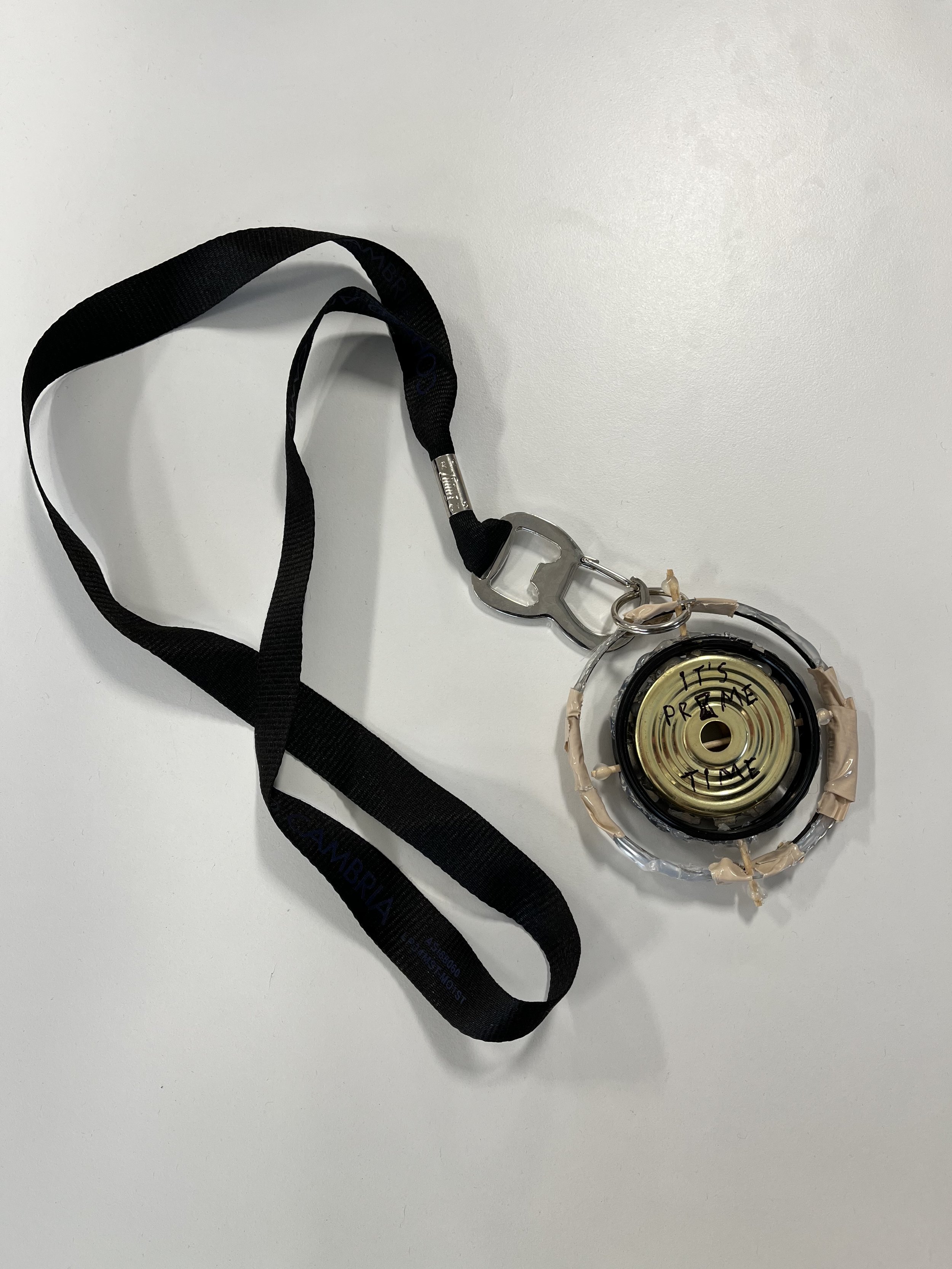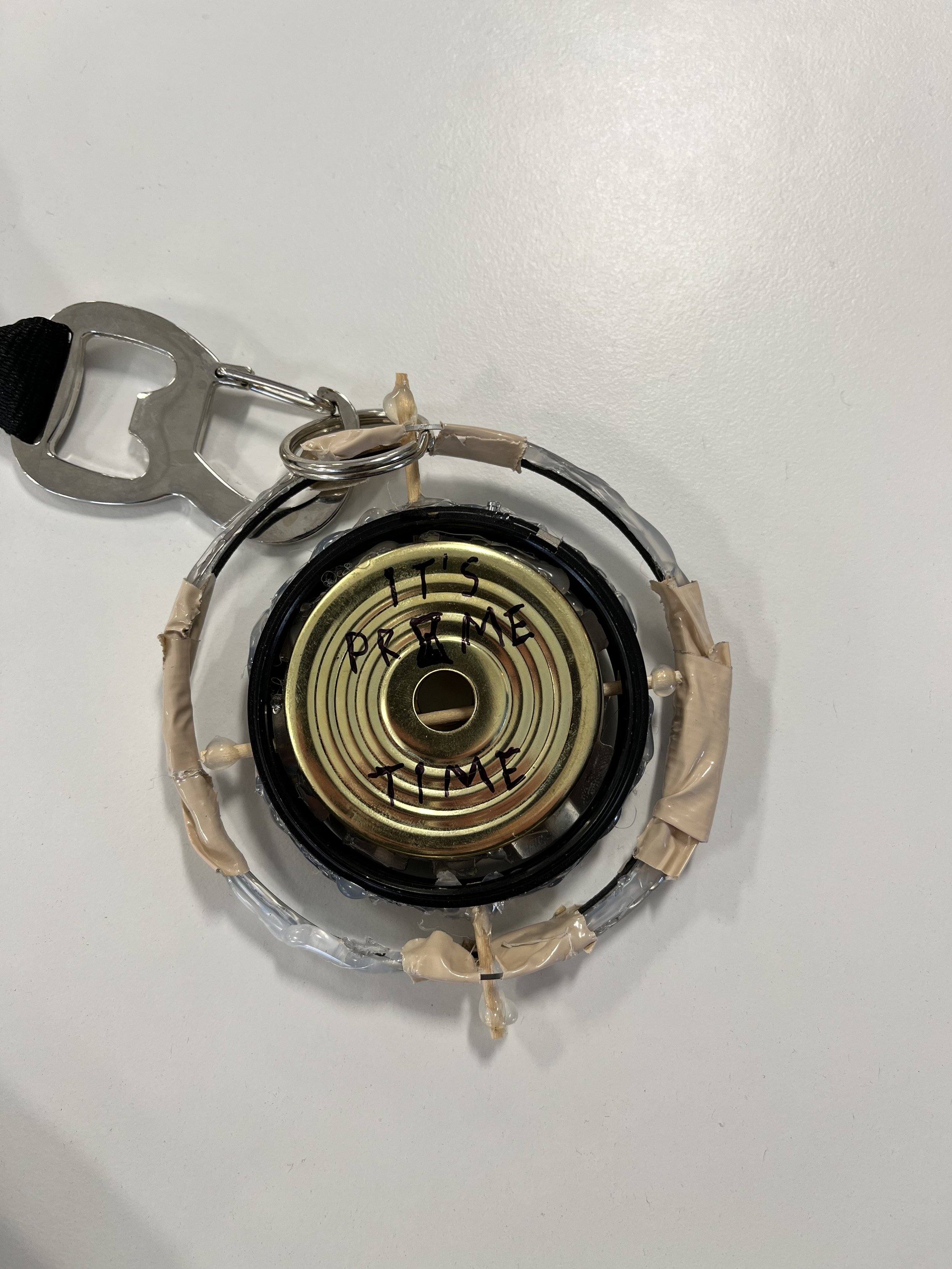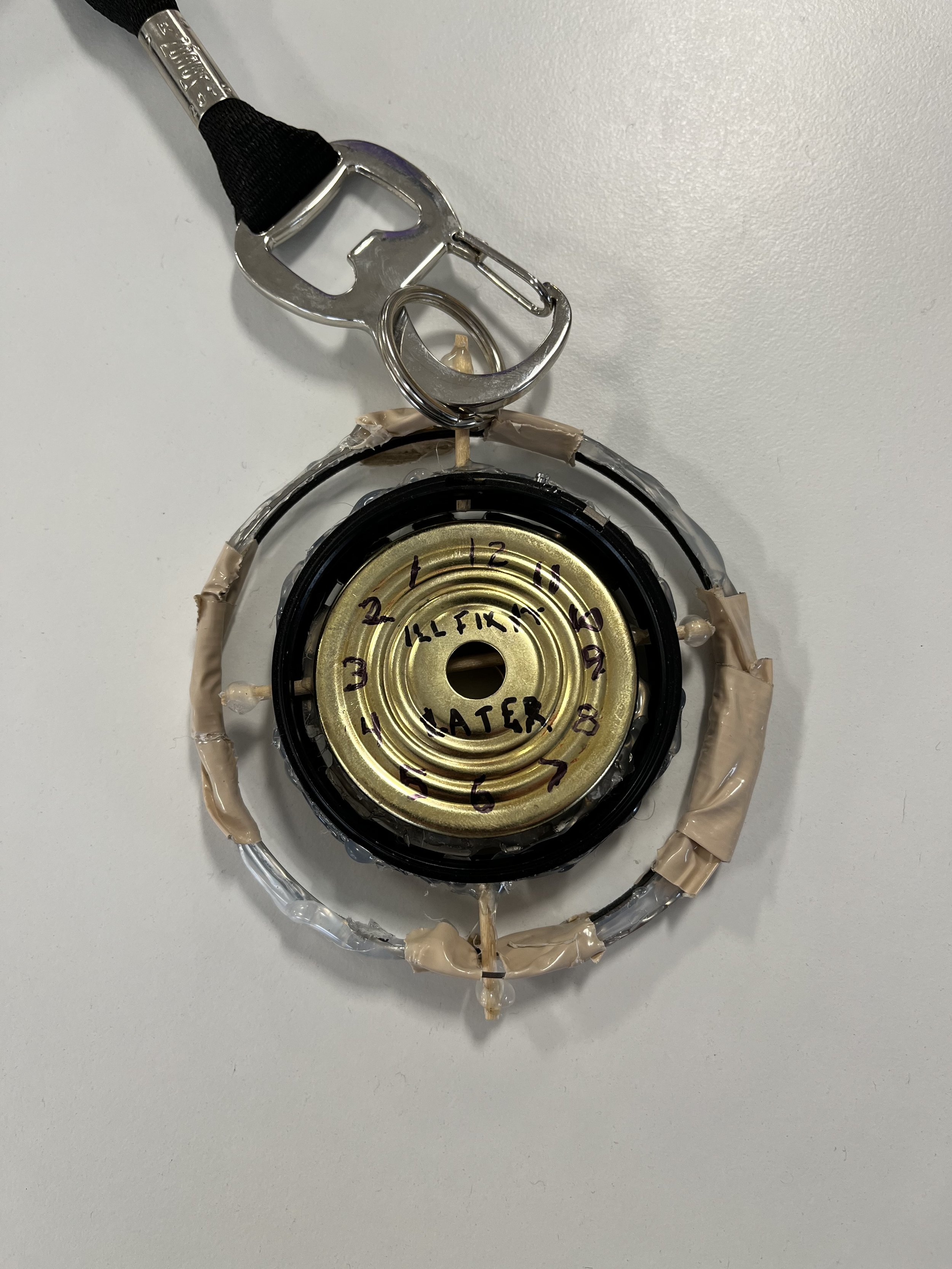
fidget fob | Case Study
Overview
The Fidget Fob. A quirky, but meaningful welcome gift for Prime Academy’s new full-stack engineering students.
ROLE
UX Researcher
UX Designer
METHODS USED
AEIOU research
Heuristic analysis
Concurrent Think-Aloud Protocol
Cognitive Walkthrough
Directed Storytelling
Evaluative Research
Usability Testing
Affinity Diagramming
TOOLS
Sketch
Google Slides
Zoom
Otter.ai
Voice memo
Figma
Pen and paper
Powerpoint
DELIVERABLES
The Challenge
Prime shareholders need a welcome gift for their full-stack engineering students when they start their in-person learning. Prime staff need something that is memorable, usable, meaningful, and relates to Prime’s style and values.
The Process
Initial Research
First, I conducted Fly-On-The-Wall, AEIOU research on full-stack students as they completed daily activities in their classroom. I noted activities, interactions, environment, objects, and users, recording in what frequency I observed these things. The goal was to get an understanding of how students behaved, and what they found value in.
Main takeaways:
Students were focused, determined on the tasks at hand, and mentioned needing more time for everything.
Clutter was common in the classroom, from backpacks tossed under desks to wrappers and cords covering desktops
My full research notes can be seen below:
Design
Design Concepts
I then created three design concepts based on these findings.
They are:
A desk organizer with the words “Clean desk, clean code” on it
A small and silly backwards clock that can spin like a gyroscope and attach to a lanyard
A “Status Bar,” with tongue-in-cheek options designed to turn someone away with humor
Of these three options, I decided that the clock had the most potential to be a welcome gift that was usable, meaningful, and personal.
Design concept 1: On-desk knick-knack holder
Design concept 2: Time turner fidget spinner (later Fidget fob)
Design concept 3: Status bar
Heuristic Analysis
Since this product could potentially replace an existing item (the lanyard, key fob, and nametag) given to all students, I decided to perform a heuristic analysis of the existing lanyard in order to understand its usability features and issues.
I assessed the usability of the existing lanyard against Jakob Nielsen’s Ten Usability Heuristics. In my report, I analyzed five tasks:
Putting on and taking off the lanyard
Using the key fob to open doors
Modifying the lanyard
Moving quickly with the lanyard
Remembering or finding the fob
Workshopping the heuristic analysis report with peers
Building the Prototype
In order to build a prototype, I headed to Leonardo’s Basement in Minneapolis. I built a working prototype of the fidget fob in the span of two hours, with the help of a lot of hot glue and some duct tape.
The main goal for the prototype was for it to spin on two axes, so users could get a sense of how they could manipulate the final object. By this metric, the prototype was successful.







Evaluation Plan
Next, I created an evaluation plan for the fidget fob. This allowed for the possibility of any other researcher to conduct research on the prototype with users.
The main goals for this evaluative research were to:
Gather users’ first impressions of the gift: its concept, size, usability, and interest-level
Compare user impressions of prototype to current lanyard and key fob
Identify areas for improvement in next prototype
Methods used included:
Artifact Analysis
Cognitive Walkthrough
Directed Storytelling
Evaluative Research
Page 1 of my evaluation plan
Usability Testing
Once the fidget fob was complete, I conducted usability tests with three current full-stack engineering students on the physical prototype to assess its strengths and weaknesses as a memorable, meaningful, and useful welcome gift. I used my evaluation plan as a guide to coaxing out impressions and feelings.
I created an affinity diagram with the notes from these tests.
An excerpt of my affinity diagram
Key takeaways from usability tests:
3/3 users found the prototype interesting, but too big and flashy to be worn by every student.
3/3 users rated the fidget fob as a 6 or 7 out of 7, providing that the finished model was smaller, moved smoothly, and conveyed a sense of high quality (i.e. made out of metal, not plastic).
3/3 users were intrigued by the idea of the fidget fob also being the key fob to open doors, but thought this would work best if it were possible to choose whether to separate the items or keep them together.
A unique perspective:
What I heard from my second interviewee really blew me away, and altered the trajectory of my project. She first discussed her feelings upon receiving the Prime Academy key fob, saying :
“I remember the fob specifically being like wow, this is it. This is really happening. This is the key to the next stage of my life.
- User 2
Later in the interview, as she was mulling over the prototype, she said:
“In the military, there's a tradition of giving coins, when you accomplish something or when you take a big step in your career. There's this idea of handing off a coin from someone who has a higher rank than you to like as sort of a congratulatory thing. This is reminding me of that, taking me back to that idea of having a relic of a moment that's very intentional.”
- User 2
While I had created a prototype I hoped would be meaningful to students, I could not have guessed the deep level of meaning this fidget fob could create in a user. This, along with positive sentiment from the other interviews, confirmed for me that I was on the right track.
Client Pitch Presentation
With these findings in hand, I gave a client pitch presentation to stakeholders at Prime. Due to a 5-minute time limit, I decided to lean into on the military/bootcamp comparisons rather than my full research process, focusing on the strong bonds of fellowship soldiers create and noting the similarly tight-knit groups at Prime. The dramatic focus of this presentation proved more effective and persuasive than a standard pitch.
Conclusion
The fidget fob elicited a strong response during user testing, which both shows its strong potential AND requires a rethinking of its design moving forward.
Next Steps
Research military coins, and lean into this aspect of the design.
Explore whether the more lighthearted aspect of the design, such as the backwards clock and jokey messages, enhance or detract from the fidget fob’s impact.
Explore the possibility of a final design being able to hold the key fob within the center, further cementing this item as a door opener to full-stack students.




